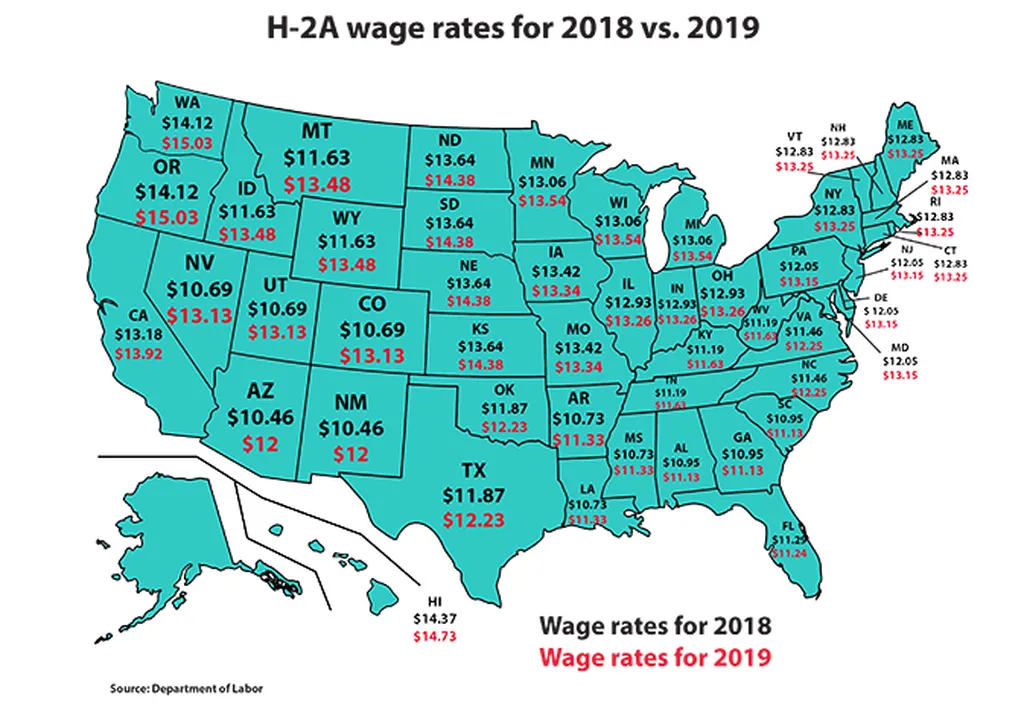A recent federal court decision has sent ripples through the agricultural sector, particularly for employers who rely on the H-2A program to address seasonal labor shortages. On August 25, a federal judge in Louisiana vacated the Department of Labor’s (DOL) 2023 Adverse Effect Wage Rate (AEWR) final rule, which had been used to calculate wages for farm workers under the H-2A program. This ruling has prompted the DOL to revisit the methodology for determining these wages, potentially impacting agricultural employers nationwide.
The H-2A program, administered by the DOL, allows agricultural employers to hire nonimmigrant foreign workers to perform seasonal or temporary agricultural labor when domestic workers are in short supply. The 2023 AEWR rule, which was implemented earlier this year, set wage rates based on the Standard Occupation Code (SOC) assigned to each worker. For instance, field and livestock workers were categorized into six distinct SOC codes, with wages determined using data from the Agricultural Labor Survey (FLS). When a worker’s duties matched multiple SOC codes, the highest applicable AEWR was used.
The lawsuit that led to the vacatur was filed in June 2023 by a coalition of farmers and agricultural organizations from Louisiana. The plaintiffs argued that the 2023 AEWR rule was “arbitrary and capricious” because it failed to consider the economic impact and the realities of modern agricultural work. They contended that the rule unfairly increased wages for seasonal migrant guestworkers by equating them with higher-paid specialists in other sectors. The court agreed, stating that the DOL had not adequately explained its decision to base wage rates on non-farm heavy and tractor-trailer truck drivers for H-2A workers who drive sugarcane trucks. The court also noted that the DOL had ignored its own guidance on SOC codes, further supporting the plaintiffs’ claims.
In response to the court’s decision, the DOL has announced that it will revert to the methodology used in the 2010 AEWR as an interim solution while it works on finalizing a new rule. The DOL has also solicited comments on proposed revisions to the H-2A Program, with a deadline for submissions set for November 10, 2025. Additionally, the USDA has discontinued the FLS, citing recent updates to the Occupational Employment and Wage Statistics (OEWS) as a superior measure for farm wages. Despite this discontinuation, the USDA has assured that efforts will be made to provide legacy FLS data to interested parties.
This court decision and the subsequent actions by the DOL and USDA highlight the complexities and challenges in determining fair and appropriate wages for agricultural workers under the H-2A program. As the DOL moves forward with revising the AEWR methodology, it will be crucial for all stakeholders—agricultural employers, workers, and policymakers—to engage in constructive dialogue to ensure that the final rule is fair, transparent, and reflective of the unique demands of agricultural labor. The outcome of this process will have significant implications for the agricultural sector and the workers who are vital to its success.

